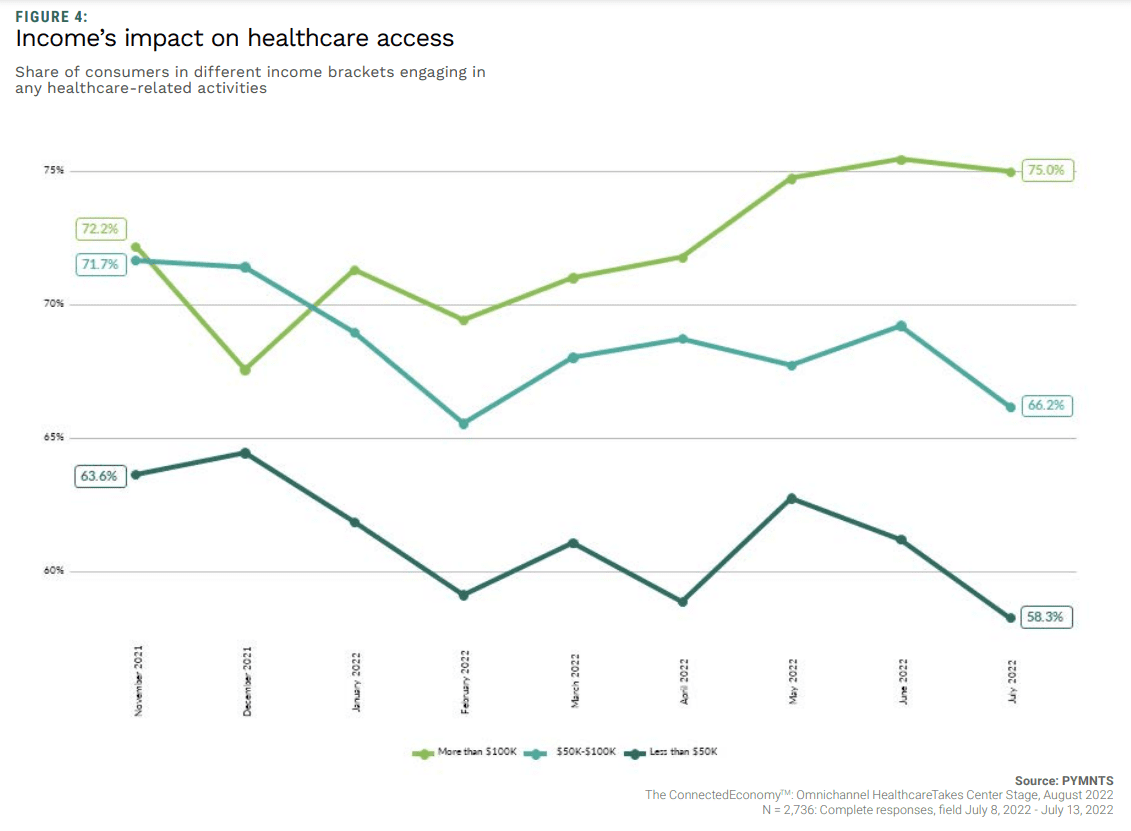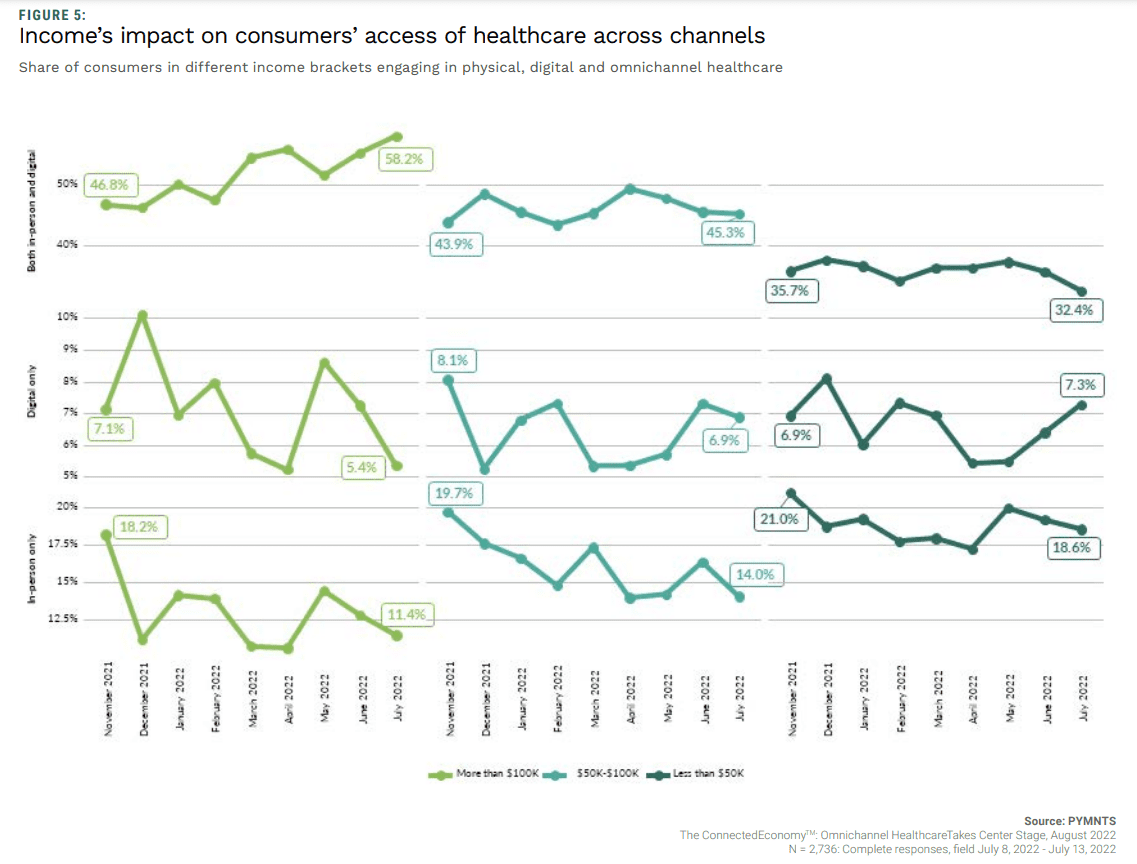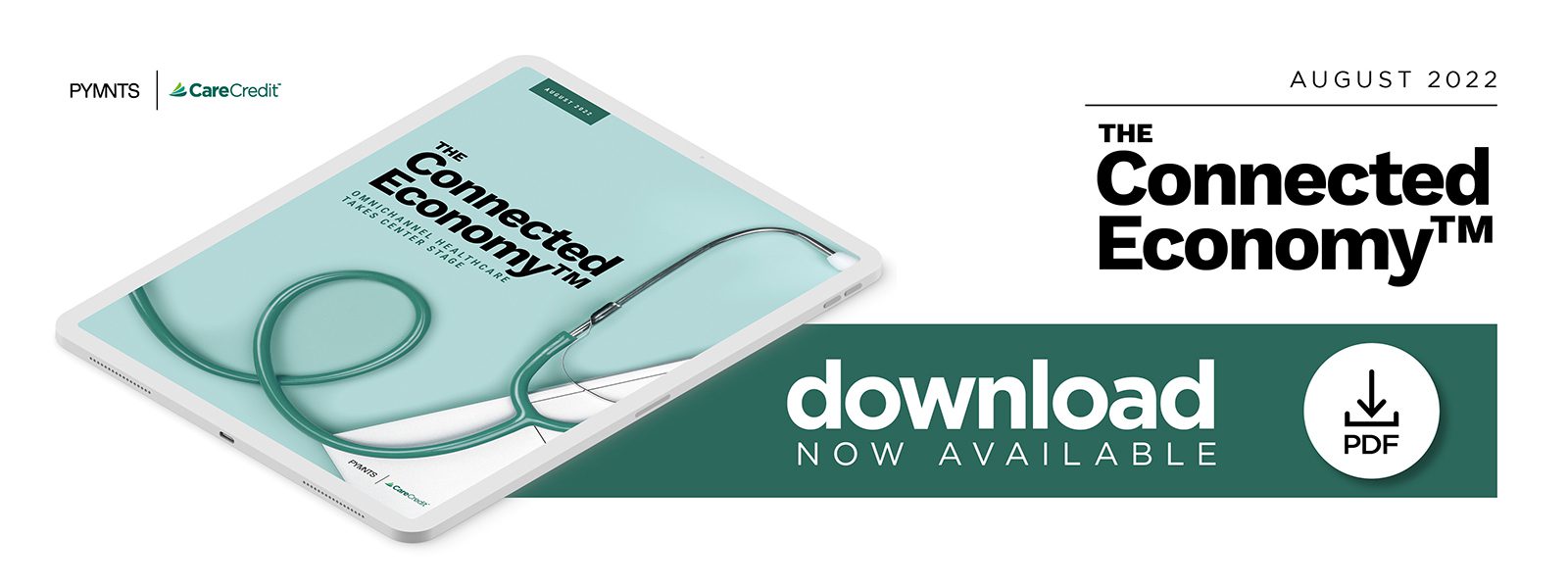Data Brief: Lower-Income Consumers Engaging Less With Healthcare Due to Costs

The second most common reason for bankruptcy in the U.S. is unpaid medical debt, and this has been true for years. As inflation and global economic upheavals have an outsized impact on those least able to keep pace with soaring prices, healthcare is foregone on financial grounds.
That’s borne out in new data from contained in the study The ConnectedEconomy™: Omnichannel Healthcare Takes Center Stage, a PYMNTS report with research sponsored by CareCredit, surveying over 2,700 U.S. consumers on healthcare access and affordability.
While innovations in telehealth are helping to triage high-cost in-person visits with what can be diagnosed and dealt with in a video doctor visit, it’s just a start. And with consumer buying power greatly impeded, the study finds more Americans ignoring their health due to cost.
Get the Study: The ConnectedEconomy™: Omnichannel Healthcare Takes Center Stage
 As would be expected, those earning less are less able to cover healthcare costs along with rents and household essentials like food, gas and utilities.
As would be expected, those earning less are less able to cover healthcare costs along with rents and household essentials like food, gas and utilities.
We see it in the data, with the study stating that “Consumers who earn less than $50,000 in annual income engaged 8% less in any type of healthcare channel last month than they did in November 2021. Just 40% of patients who earn less than $50,000 in annual income engage in digital healthcare activities, and their numbers are falling.”
However, the share of low-income consumers engaging with healthcare professionals online “has increased 6% since November 2021. This suggests that digital healthcare options are growing more critical for low-income consumers, and this trend shows no sign of slowing.”
 On the flipside, and again what we would expect to see, higher earning consumers are showing slight but meaningful increases in their engagement with doctors and clinicians.
On the flipside, and again what we would expect to see, higher earning consumers are showing slight but meaningful increases in their engagement with doctors and clinicians.
Our research found that consumers earning more than $100,000 annually “were 4% more engaged in some sort of healthcare-related activity last month than in November 2021. Healthcare engagement is highest among high-income consumers, regardless of whether they access their healthcare online, in-person or by using a mixture of both.”
See It Now: The ConnectedEconomy™: Omnichannel Healthcare Takes Center Stage

